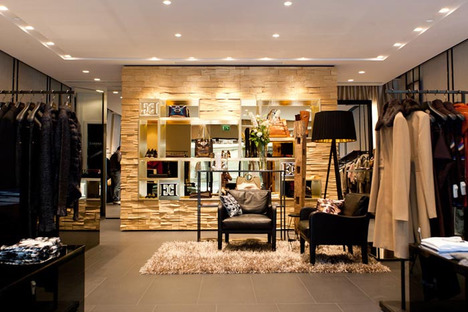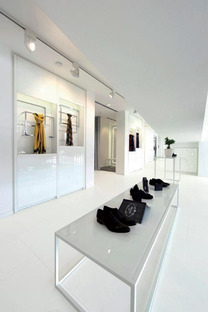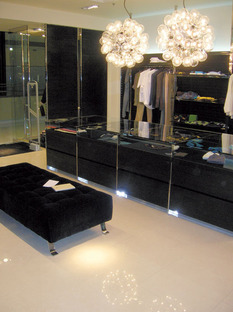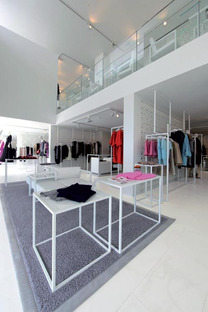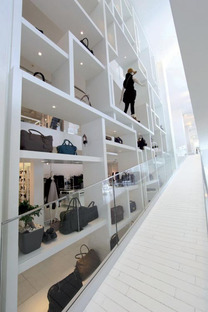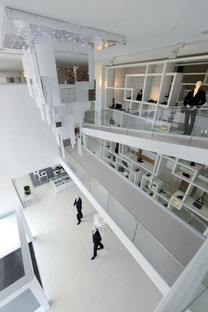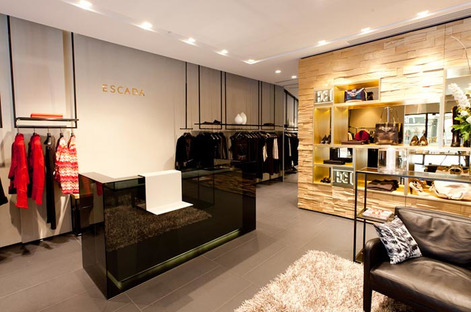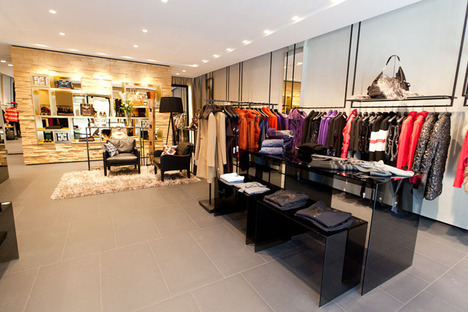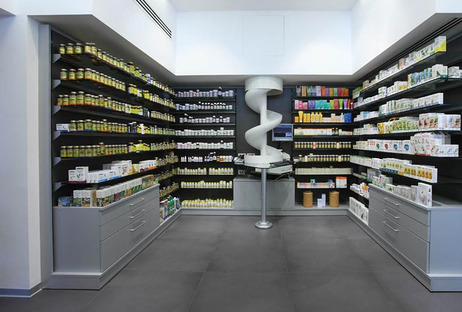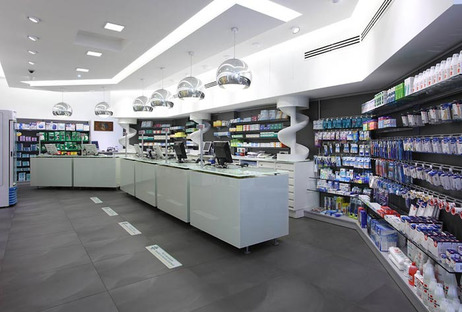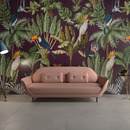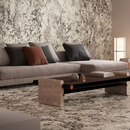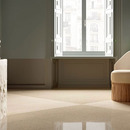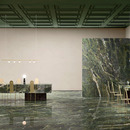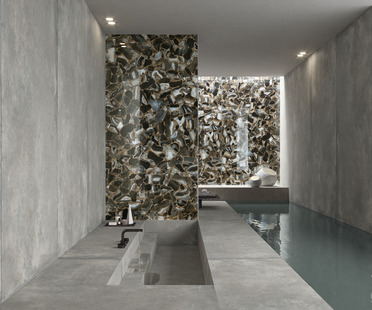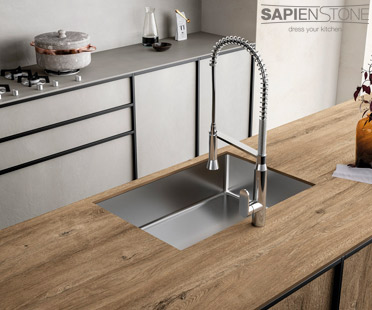13-03-2014
Store wall and floor coverings: Three basic rules.
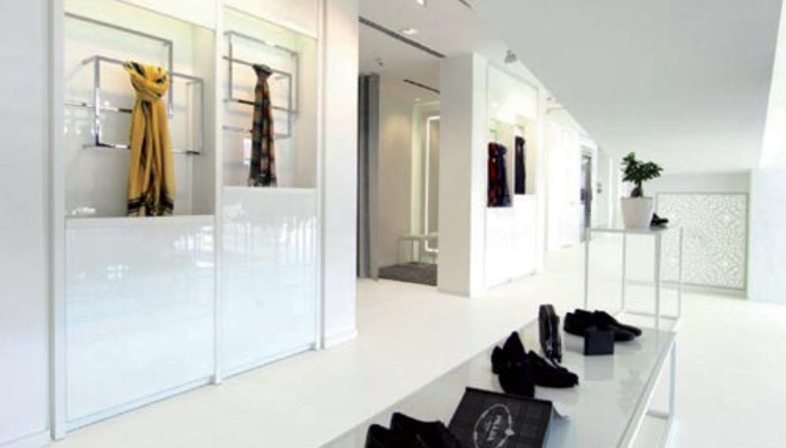


These days we are overloaded with images, and so any store that wants people to recognise and remember it must have a strong identity expressing the principles of its brand. The materials used to finish the interiors in the store’s design must have strong emotional impact as well as being easy to maintain and resistant to wear. High-tech ceramics are available in a vast range of different sizes and colours to meet all these requirements, making them one of the best materials for this purpose. The expressiveness of porcelain floor and wall tiles can blend in discreetly or overflow with decoration, it can be minimal or vintage style, and it always offers the benefits of advanced technology.
There are three key rules to good store design for visual marketing aimed at supporting the product sold, highlighting it and making it appear attractive: shoppers’ routes in the store, the overall view, and lighting.
Routes through the store, whether straight or winding, must be clearly marked and visible, even when the goods for sale are standing on the floor, to create ever-changing pathways in a chromatically continuous space. But these two cases, straight paths or a continuous space, may be reconciled in design with porcelain stoneware. In the first case, chromatic diversification and the contrast between glossy and matt finishes become elements stitching together routes through the store, whereas in the second case uniformity allows vertical elements to organise space but maintains visual constancy through the continuity of the ceramic units. In both cases, ceramic surfaces respond to two design challenges. In the first case the colours, whether artificial or natural, stone or wood, monochrome or decorated, can be combined to create an inwardly orientated space, while in the second case big porcelain tiles create an uninterrupted harmonious space.
The overall view links the store set-up with the brand, and so creativity takes over, taking care not to be distracted by the pleasures of design and lose sight of its purpose, maintaining the relationship between coordinated image and the design of the store space. Colour often becomes the dominant element; and what material could be more versatile than high-tech ceramics for satisfying this goal? Not many, as ceramics can be created in an infinite number of hues. And solid ceramics can reproduce natural materials, not only in the same colours but with the same thickness. This technology, obtained with pressed powders, maintains the same depth of colour as the natural material. And so porcelain tiles permit construction of a store identity which is in line with the identity of the brand, in a successful marriage.
Last but not least, light underlines the goods on sale. Careful consideration of this component is essential, whether the light be artificial or natural. It’s always hard to choose between diffuse lighting or spotlights focusing on individual elements, but it is up to the conscientious designer to make the choice, recalling that one of the principles of the refraction of light is dependent on the surfaces it strikes, and their ability to absorb or return light. And so it becomes important to determine how porcelain tiles respond to both these needs: reflecting when they have a glossy finish, or absorbing light with a matt finish.
Ceramic floor and wall coverings are a key aspect of store design expressing brand identity. Leafing through the GranitiFiandre catalogue makes it easy to find the best solution for responding to all its rules.
COMPANY MENTIONED:
GranitiFiandre










